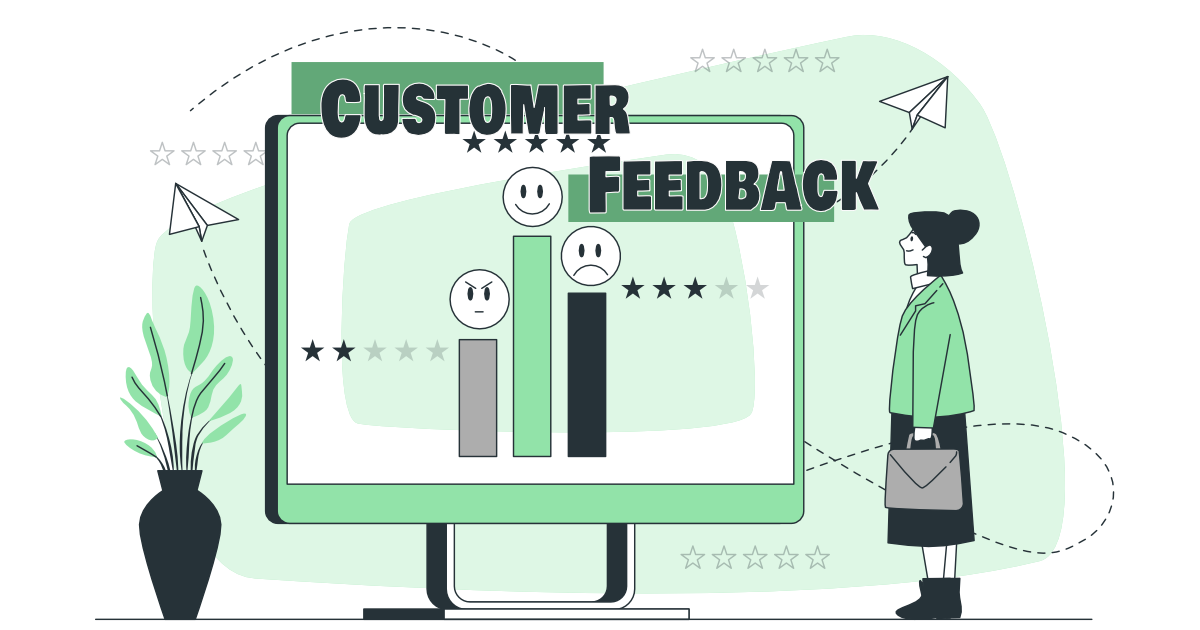Raising debt financing is an important aspect of financial management for entrepreneurs, as it allows them to obtain funds without giving up equity in their business. This type of funding can come in the form of a loan from a bank or other financial institution, or from investors in the form of bonds. In this article, we will explore the different types of debt financing available to entrepreneurs, as well as the pros and cons of each option and tips on how to secure funding.
Types of debt financing
When it comes to funding a business, entrepreneurs have several options to choose from, including debt financing. Unlike equity financing, where the business owner gives up a portion of ownership in exchange for funds, debt financing involves borrowing money and repaying it with interest. There are several types of debt financing available to entrepreneurs, each with its own set of pros and cons.
- Bank Loans
One of the most common types of debt financing for entrepreneurs is a bank loan. Banks offer a variety of loan options, including term loans, line of credit, and equipment financing. Term loans are a lump sum of money that must be repaid over a set period of time, usually with a fixed interest rate. A line of credit, on the other hand, is a revolving credit account that can be borrowed from and repaid multiple times. Equipment financing is a loan specifically for the purchase of business equipment.
Examples: Small Business Administration (SBA) Loans, Equipment Loans
- Bond Financing
Another option for entrepreneurs is bond financing. With this type of debt financing, a business issues bonds to investors in exchange for funds. These investors then earn a return on their investment in the form of interest payments. Bonds can be issued by private companies or municipalities and are often used to fund large-scale projects or expansions.
Examples: Municipal Bonds, Corporate Bonds
- Invoice Financing
Invoice financing, also known as accounts receivable financing, is a type of debt financing that allows a business to borrow money against its outstanding invoices. This can be a useful option for businesses that have a significant amount of unpaid invoices but need cash flow to cover expenses.
Examples: Factoring, Purchase Order Financing
Best Practices
- Before applying for debt financing, it’s important to have a solid business plan and financial projections in place. Lenders will want to see that you have a clear understanding of your business and how you plan to use the funds.
- Be prepared to provide financial statements, tax returns, and other documentation when applying for a loan.
- Compare offers from different lenders to find the best terms and interest rates.
- Make sure you fully understand the terms and conditions of the loan before signing on the dotted line.
References:
- Small Business Administration (SBA): https://www.sba.gov/funding-programs/loans
- Investopedia: https://www.investopedia.com/terms/b/bondfinancing.asp
- Forbes: https://www.forbes.com/sites/forbesbusinesscouncil/2021/01/13/invoice-financing-101-everything-you-need-to-know-about-this-type-of-business-funding/?sh=6a7e4e4f4d7b
In conclusion, entrepreneurs have several options to choose from when it comes to debt financing. Each type of debt financing has its own set of pros and cons, and it’s important to understand the terms and conditions of the loan before signing on the dotted line. By understanding the different types of debt financing available, entrepreneurs can make an informed decision about how to fund their business.
Preparing and presenting loan applications
Securing debt financing is crucial for entrepreneurs looking to start or grow their business. However, the process of applying for a loan can be daunting, especially if you’re not familiar with what lenders are looking for. In this article, we will explore tips and best practices for preparing and presenting a winning loan application.
- Understand Your Business Needs
Before applying for a loan, it’s important to have a clear understanding of your business needs. This includes the purpose of the loan, how you plan to use the funds, and how the loan will help your business grow. Having a solid business plan in place that outlines your goals and strategies will help you communicate this information to potential lenders.
- Understand Your Financials
Lenders will want to see that you have a good understanding of your business finances. This includes information such as income statements, balance sheets, and cash flow projections. Be prepared to provide this information to potential lenders and be able to explain any fluctuations or discrepancies in your financials.
- Show Your Collateral
Many lenders will require collateral to secure a loan. Collateral is an asset that you pledge as security for the loan. This can include things like equipment, inventory, or real estate. If you plan to use collateral to secure a loan, make sure you have a clear understanding of its value and how it can be used as collateral.
- Build a Strong Credit Profile
Your credit profile is one of the most important factors that lenders consider when evaluating a loan application. Make sure to review your credit report and address any errors or discrepancies. Paying bills on time and maintaining a low debt-to-income ratio will also help to improve your credit score.
- Be Honest and Transparent
Be honest and transparent with potential lenders about your business and financials. If there are any concerns or red flags, address them head-on in your application. Lenders are more likely to work with you if they know that you’re being upfront and honest about your business.
Best Practices:
- Have a solid business plan in place that outlines your goals and strategies
- Be prepared to provide financial statements, tax returns, and other documentation
- Show how you plan to use the funds and how the loan will help your business grow
- Build a strong credit profile
- Be honest and transparent
References:
- Small Business Administration (SBA): https://www.sba.gov/document/sba-form-413-personal-financial-statement
- Investopedia: https://www.investopedia.com/terms/c/collateral.asp
- Forbes: https://www.forbes.com/sites/forbesbusinesscouncil/2022/11/22/four-tips-for-building-a-strong-credit-profile-for-your-small-business/?sh=21f6a3614d77
In conclusion, preparing and presenting a winning loan application requires a clear understanding of your business needs, financials, and credit profile. By following the tips and best practices outlined in this article, entrepreneurs can increase their chances of securing the funding they need to start or grow their business.
Negotiating terms and interest rates
Securing debt financing is a vital step in starting or growing a business, but the terms and interest rates offered by lenders can vary widely. In this article, we will explore how entrepreneurs can negotiate the best terms and interest rates for their business loans.
- Know Your Credit Score
Your credit score is a major factor in determining the terms and interest rates offered by lenders. Before applying for a loan, make sure you know your credit score and take steps to improve it if necessary. This can include paying bills on time, maintaining a low debt-to-income ratio, and addressing any errors or discrepancies on your credit report.
- Shop Around for Lenders
Different lenders have different lending criteria and offer different terms and interest rates. It’s important to shop around and compare offers from different lenders to find the best deal for your business. This can include traditional banks, alternative lenders, and online lenders.
- Understand the Terms and Interest Rates
When comparing loan offers, make sure you understand the terms and interest rates being offered. This includes the length of the loan, the repayment schedule, and any fees or penalties. Understanding the terms and interest rates will help you compare offers and negotiate the best deal for your business.
- Have Collateral or a Co-Signer
Collateral or a co-signer can help to secure a loan and may result in better terms and interest rates. Collateral is an asset that you pledge as security for the loan, such as equipment, inventory, or real estate. A co-signer is a person who agrees to be responsible for the loan if you are unable to repay it.
- Be Prepared to Negotiate
When it comes to loan terms and interest rates, it’s important to be prepared to negotiate. Let the lender know that you have other offers and are looking for the best deal. Be prepared to walk away if the terms and interest rates offered are not favorable.
Best Practices:
- Know your credit score and take steps to improve it if necessary
- Shop around for lenders and compare offers
- Understand the terms and interest rates
- Have collateral or a co-signer
- Be prepared to negotiate
References:
- Small Business Administration (SBA): https://www.sba.gov/funding-programs/loans/compare-different-sba-loan-options
- Forbes: https://www.forbes.com/sites/forbesbusinesscouncil/2022/12/16/how-to-negotiate-the-best-terms-and-interest-rates-for-your-business-loan/?sh=5f5f9d9c1e8f
- Entrepreneur: https://www.entrepreneur.com/article/271701
In conclusion, entrepreneurs can negotiate the best terms and interest rates for their business loans by understanding their credit score, shopping around for lenders, understanding the terms and interest rates, having collateral or a co-signer, and being prepared to negotiate. By following these tips and best practices, entrepreneurs can secure the funding they need to start or grow their business at favorable terms and rates.
Managing and repaying debt
Raising debt financing can be a great way to start or grow a business, but it’s important to have a plan for managing and repaying the debt. In this article, we will explore strategies for managing and repaying debt for entrepreneurs.
- Create a Budget and Cash Flow Forecast
A budget and cash flow forecast will help you understand your income and expenses and plan for debt repayment. It will also help you identify areas where you can cut costs or increase revenue to help with debt repayment.
- Prioritize Debt Repayment
When you have multiple debts, it’s important to prioritize which ones to pay off first. High-interest debts, such as credit card debt, should be paid off first, followed by lower-interest loans. By paying off high-interest debt first, you can save money on interest and become debt-free faster.
- Consider Consolidating or Refinancing Debt
Consolidating or refinancing debt can help to lower interest rates and make payments more manageable. This can include consolidating multiple credit card balances into one loan with a lower interest rate or refinancing a business loan at a lower rate.
- Be Honest and Communicate with Your Lenders
If you’re having trouble making debt payments, it’s important to be honest and communicate with your lenders. They may be able to work with you to create a payment plan or modify the loan terms.
- Seek Professional Help
If you’re struggling to manage debt, it may be helpful to seek professional help from a financial advisor, accountant, or credit counselor. They can help you create a debt repayment plan and provide guidance on managing and repaying debt.
Best Practices:
- Create a budget and cash flow forecast
- Prioritize debt repayment
- Consider consolidating or refinancing debt
- Be honest and communicate with your lenders
- Seek professional help
References:
- Small Business Administration (SBA): https://www.sba.gov/managing-business/financial-management/repaying-debt
- The Balance: https://www.thebalance.com/repaying-business-debt-3977512
- Forbes: https://www.forbes.com/sites/forbesbusinesscouncil/2022/12/17/5-strategies-for-managing-and-repaying-business-debt/?sh=4f3e9e9c1e8f
In conclusion, managing and repaying debt is a crucial part of being an entrepreneur. By creating a budget and cash flow forecast, prioritizing debt repayment, consolidating or refinancing debt, being honest and communicating with lenders, and seeking professional help, entrepreneurs can effectively manage and repay their debt, allowing them to focus on growing their business.
Understanding credit ratings and their impact
Credit ratings are a measure of a company’s creditworthiness, and they play a crucial role in the debt financing process. A high credit rating makes it easier for a business to secure funding and lower interest rates. In this article, we will explore credit ratings, how they are determined, and their impact on entrepreneurs.
- What are Credit Ratings?
Credit ratings are assigned by credit rating agencies, such as Standard & Poor’s, Moody’s, and Fitch. These agencies evaluate a company’s financial health and assign a rating based on the company’s ability to repay its debts. Credit ratings range from AAA (the highest rating) to D (default).
- How are Credit Ratings Determined?
Credit rating agencies use a variety of factors to determine a company’s credit rating. These include:
- Financial stability: This includes factors such as revenue, profits, and cash flow.
- Debt levels: Credit rating agencies evaluate a company’s debt levels, including the amount of debt and the interest rate on the debt.
- Management and governance: The credit rating agency will evaluate the company’s management and governance, including the company’s leadership and decision-making processes.
- How do Credit Ratings Impact Entrepreneurs?
Credit ratings can have a significant impact on entrepreneurs. A high credit rating makes it easier for a business to secure funding and lower interest rates. Additionally, a high credit rating can help to build the company’s reputation and credibility with suppliers, customers, and other stakeholders.
On the other hand, a low credit rating can make it more difficult for a business to secure funding and result in higher interest rates. It can also make it more difficult to establish relationships with suppliers and customers.
Best Practices:
- Understand your credit rating
- Regularly review your credit report
- Improve your credit score
- Maintain a good relationship with your lender
References:
- Small Business Administration (SBA): https://www.sba.gov/managing-business/financial-management/credit-ratings-and-their-impact
- Investopedia: https://www.investopedia.com/terms/c/creditrating.asp
- Business Insider: https://www.businessinsider.com/credit-ratings-meaning-impact-2019-5
In conclusion, credit ratings play a crucial role in the debt financing process for entrepreneurs. Understanding credit ratings and how they are determined can help entrepreneurs make informed decisions about securing funding and managing debt. By regularly reviewing your credit report, improving your credit score, and maintaining a good relationship with lenders, entrepreneurs can improve their credit rating and make it easier to secure funding and lower interest rates.
Alternative debt financing options
In the previous article, we discussed alternative debt financing options such as crowdfunding, peer-to-peer lending, factoring, and merchant cash advance. In this article, we will explore additional alternative debt financing options such as revenue-based financing and invoice financing.
- Revenue-Based Financing
Revenue-based financing is a form of alternative lending in which a lender provides a business with a lump sum of cash in exchange for a percentage of the business’s future revenue. This type of financing is often used by businesses that have a predictable revenue stream, such as software companies and subscription-based businesses.
- Invoice Financing
Invoice financing is a form of alternative lending in which a business sells its accounts receivable to a third party at a discount. This allows the business to receive cash immediately, rather than waiting for customers to pay their invoices.
Best Practices:
- Understand the terms and conditions of the financing
- Compare interest rates and fees
- Make sure the lender is reputable
- Understand the impact of the financing on your revenue and cash flow
References:
- Venture Beat: https://venturebeat.com/2021/05/08/revenue-based-financing-is-the-latest-alternative-lending-option-for-startups/
- Investopedia: https://www.investopedia.com/terms/i/invoice-financing.asp
- Forbes: https://www.forbes.com/sites/forbesbusinesscouncil/2019/05/09/four-alternative-financing-options-for-entrepreneurs/?sh=7a4c5d8b7a26
In conclusion, while traditional debt financing options are a popular choice for entrepreneurs, alternative options such as revenue-based financing and invoice financing are also available. Entrepreneurs should understand the terms and conditions, compare interest rates and fees, and make sure the lender is reputable before making a decision on the best debt financing option for their business. Additionally, entrepreneurs should consider the impact of the financing on their revenue and cash flow.
Credit risk management
As an entrepreneur, it’s important to not only secure funding for your business, but also manage the risk associated with debt financing. Credit risk management is the process of identifying, assessing, and prioritizing the potential credit risks a business may face, and implementing strategies to mitigate or manage those risks.
- Identifying Credit Risks
The first step in credit risk management is identifying potential credit risks. This includes evaluating the creditworthiness of potential borrowers, as well as assessing the potential impact of external factors such as economic conditions and industry trends.
- Assessing Credit Risks
Once potential credit risks have been identified, the next step is to assess the potential impact of those risks on the business. This includes evaluating the likelihood of default, as well as the potential financial loss if default does occur.
- Prioritizing Credit Risks
After assessing potential credit risks, the next step is to prioritize them based on their potential impact on the business. This allows the business to focus on managing the most significant risks first.
- Implementing Strategies to Mitigate or Manage Credit Risks
Once credit risks have been identified, assessed, and prioritized, the next step is to implement strategies to mitigate or manage those risks. This includes implementing risk management policies and procedures, as well as monitoring and reporting on credit risk.
Best Practices:
- Understand the creditworthiness of potential borrowers
- Assess the potential impact of external factors on credit risks
- Prioritize credit risks based on potential impact
- Implement risk management policies and procedures
- Monitor and report on credit risk
References:
- Small Business Administration: https://www.sba.gov/business-guide/launch-your-business/manage-credit-risk
- Investopedia: https://www.investopedia.com/terms/c/creditriskmanagement.asp
- Harvard Business Review: https://hbr.org/2019/05/how-to-manage-credit-risk
In conclusion, credit risk management is a crucial aspect of running a business, particularly for entrepreneurs who rely on debt financing. By identifying, assessing, prioritizing, and implementing strategies to mitigate or manage credit risks, entrepreneurs can better protect their business and increase the chances of success.
Collateral and security options
When it comes to raising debt financing, having collateral or security can be a key factor in getting approved for a loan. Collateral and security options provide lenders with added assurance that they will be able to recover their funds in the event that the borrower defaults on the loan.
- Types of Collateral
Collateral is an asset that is pledged as security for a loan. Some common types of collateral include:
- Real estate
- Equipment
- Inventory
- Accounts receivable
- Personal assets (such as a car or jewelry)
- Types of Security
Security is a legal right to take possession of collateral in the event of default. Some common types of security include:
- Mortgages
- Liens
- Pledges
- Guarantees
- How Collateral and Security Affect the Loan Approval Process
Having collateral or security can increase the chances of getting approved for a loan, as it provides lenders with added assurance that they will be able to recover their funds in the event of default. However, it’s important to note that not all types of collateral or security are accepted by all lenders.
Best Practices for Securing Your Debt Financing
- Understand the types of collateral and security that are accepted by different lenders
- Be prepared to pledge assets as collateral or security
- Negotiate terms and interest rates with lenders
- Have a solid plan for repaying the loan
References:
- Small Business Administration: https://www.sba.gov/business-guide/launch-your-business/raise-debt-financing
- Investopedia: https://www.investopedia.com/terms/c/collateral.asp
- Nolo: https://www.nolo.com/legal-encyclopedia/collateral-security-loans.html
In conclusion, collateral and security options can be a key factor in getting approved for a loan and securing debt financing for your business. It’s important for entrepreneurs to understand the different types of collateral and security available and be prepared to pledge assets as collateral or security. Additionally, having a solid plan for repaying the loan and negotiating terms and interest rates with lenders can also increase the chances of getting approved for a loan.
Covenants and financial ratios
When it comes to raising debt financing, it’s important for entrepreneurs to understand the terms and conditions of the loan agreement, including covenants and financial ratios. Covenants are conditions that the borrower must meet in order to maintain the loan, while financial ratios are used by lenders to assess the borrower’s ability to repay the loan.
- Types of Covenants
Covenants are terms that the borrower must meet in order to maintain the loan. Some common types of covenants include:
- Maintenance of a minimum net worth
- Maintenance of a minimum level of liquidity
- Restrictions on the payment of dividends
- Restrictions on the incurrence of additional debt
- Restrictions on the disposal of assets
- Financial Ratios
Financial ratios are used by lenders to assess the borrower’s ability to repay the loan. Some common financial ratios include:
- Debt-to-equity ratio
- Current ratio
- Interest coverage ratio
- Return on assets (ROA)
- Return on equity (ROE)
- How Covenants and Financial Ratios Affect the Loan Approval Process
Covenants and financial ratios are used by lenders to assess the borrower’s ability to repay the loan and the risk of default. A borrower’s failure to meet the covenants or maintain the financial ratios agreed upon in the loan agreement can result in a default on the loan.
Best Practices for Understanding and Meeting Covenants and Financial Ratios
- Understand the covenants and financial ratios required by the lender
- Monitor your business’s financial performance to ensure compliance
- Communicate with your lender if you are unable to meet a covenant or maintain a financial ratio
- Negotiate terms and conditions of the loan agreement that are realistic and achievable for your business
References:
- Small Business Administration: https://www.sba.gov/business-guide/launch-your-business/raise-debt-financing
- Investopedia: https://www.investopedia.com/terms/c/covenant.asp
- Nolo: https://www.nolo.com/legal-encyclopedia/loan-covenants-violations-defaults.html
In conclusion, understanding and meeting covenants and financial ratios are an important aspect of raising debt financing for your business. It’s important for entrepreneurs to understand the terms and conditions of the loan agreement and monitor their business’s financial performance to ensure compliance. Communicating with your lender if you are unable to meet a covenant or maintain a financial ratio and negotiating terms and conditions that are realistic and achievable for your business can help you secure the funding you need for your business.













